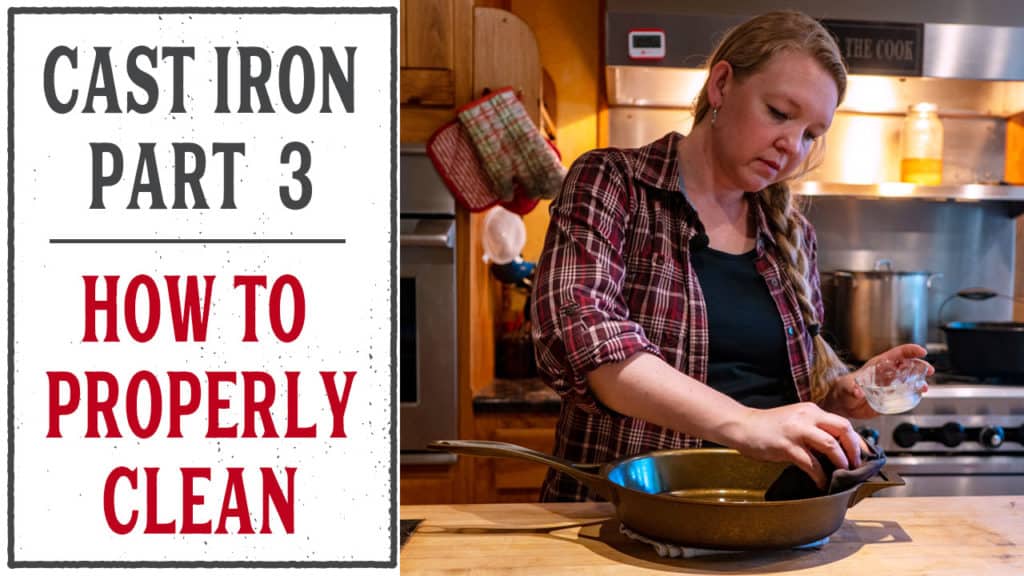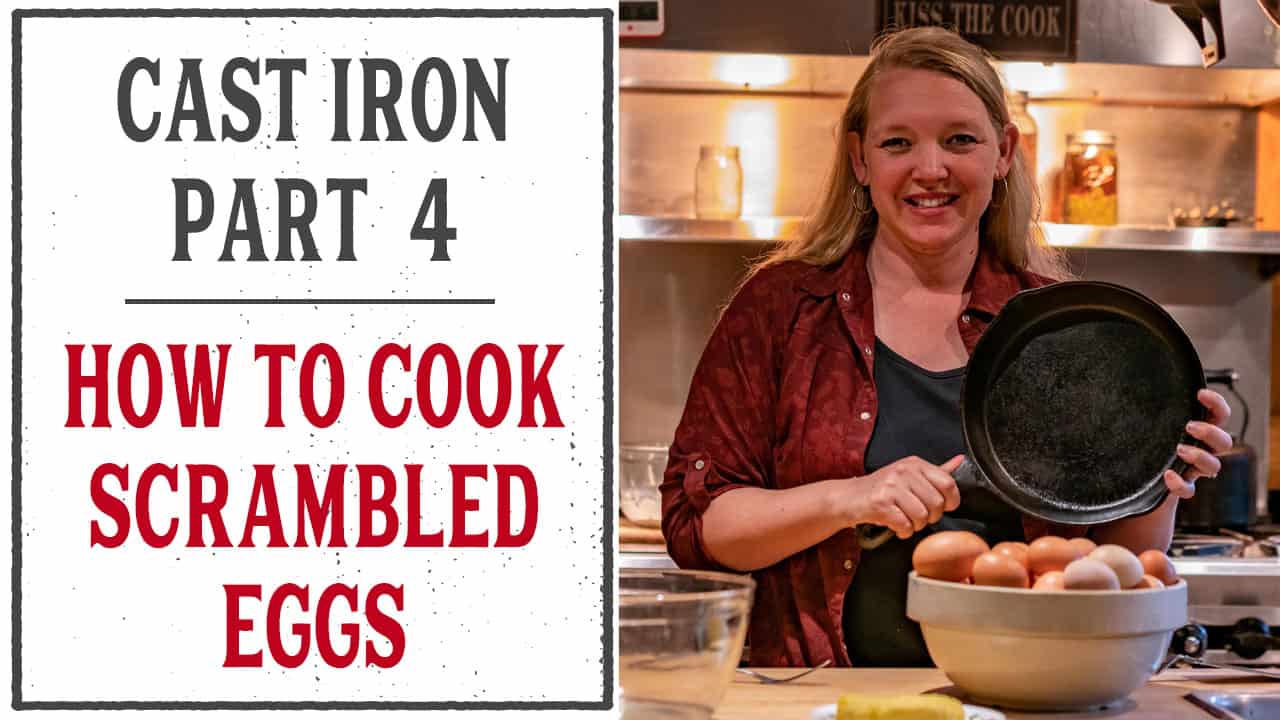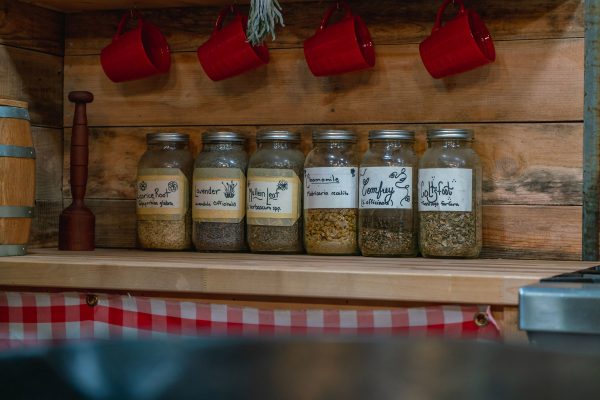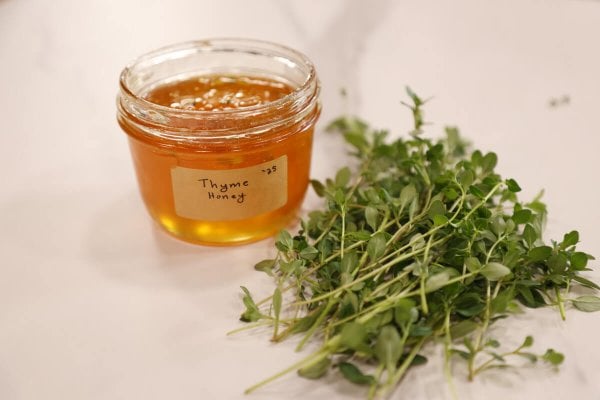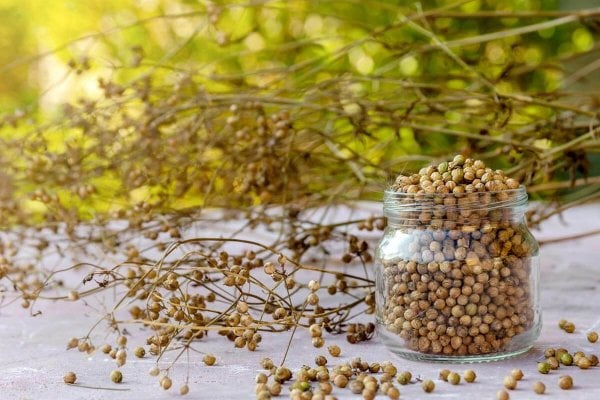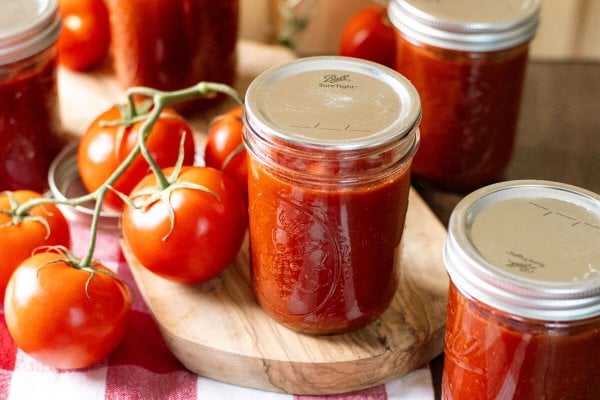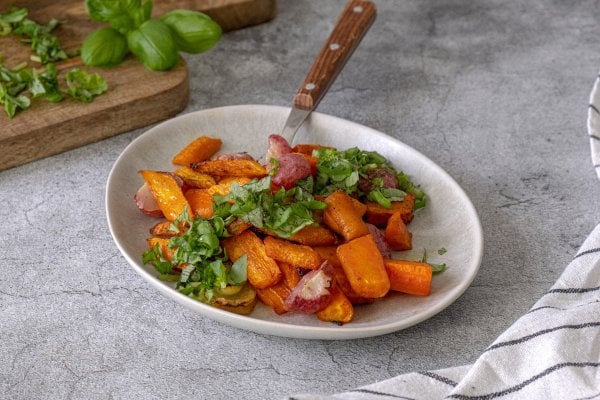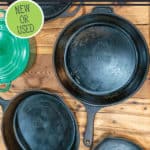
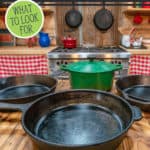
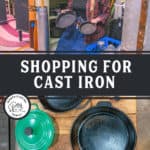
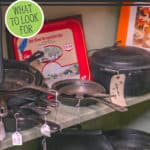
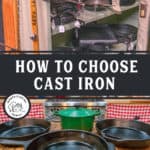

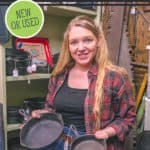
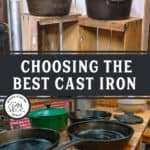
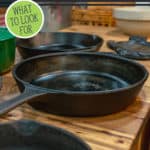
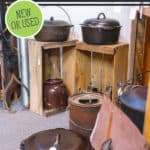

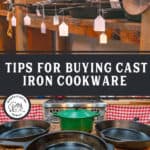
Many homesteaders know the benefits of cast iron. Finding the best cast iron cookware, whether new or used, can be tricky. You need to know what to look for when choosing the right cookware for you. These tips should help.

The Four Different Types of Cast Iron Cookware
Antique
- Made during the 1800’s through to the mid-1900s.
- These traditional cast iron skillets were made with much finer sand in the cast, and it was made with a process that’s not economically viable for most businesses these days.
- Old antique and vintage cast iron brands like Griswold or Wagner are going to have a much smoother finish.
- Lighter than the modern cast iron pieces.
- You can get them to have an almost completely nonstick surface which also makes them easy to clean.
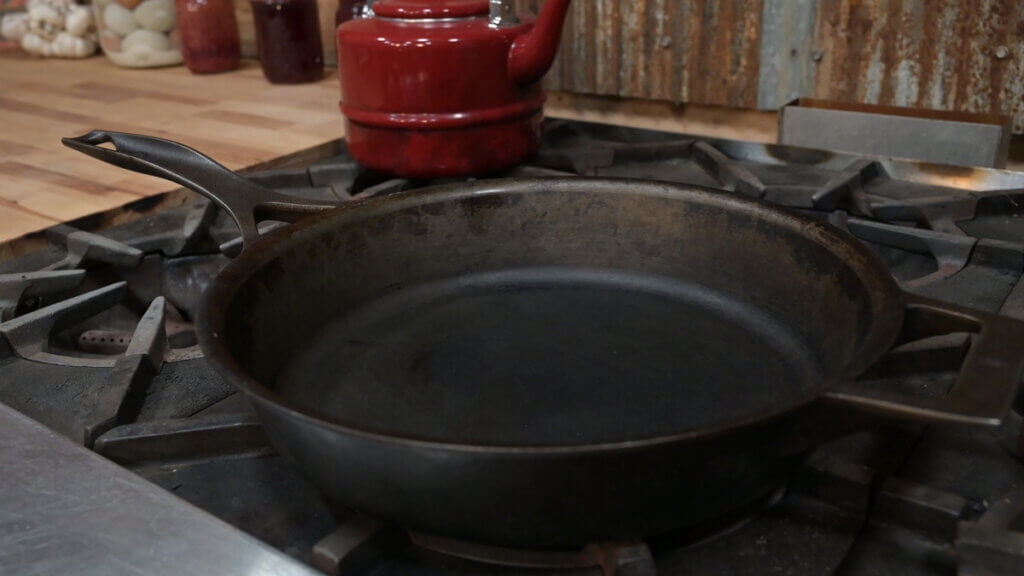
Modern Rough
- It started being made in the 1950s due to OSHA regulations. It turns out that the fine grain of the sand was causing respiratory issues for the workers in the factories.
- Modern rough has a larger grain of sand which produces a rougher finish.
- The pieces usually come pre-seasoned (usually with unhealthy vegetable oils) because they’re much harder to season yourself and will take much longer to obtain a somewhat non-stick surface.
- The surface of the modern rough will never equate to the smoothness and the non-stick quality of the antique or modern smooth.
- Many of the Lodge & Victoria pieces out there now are modern rough.
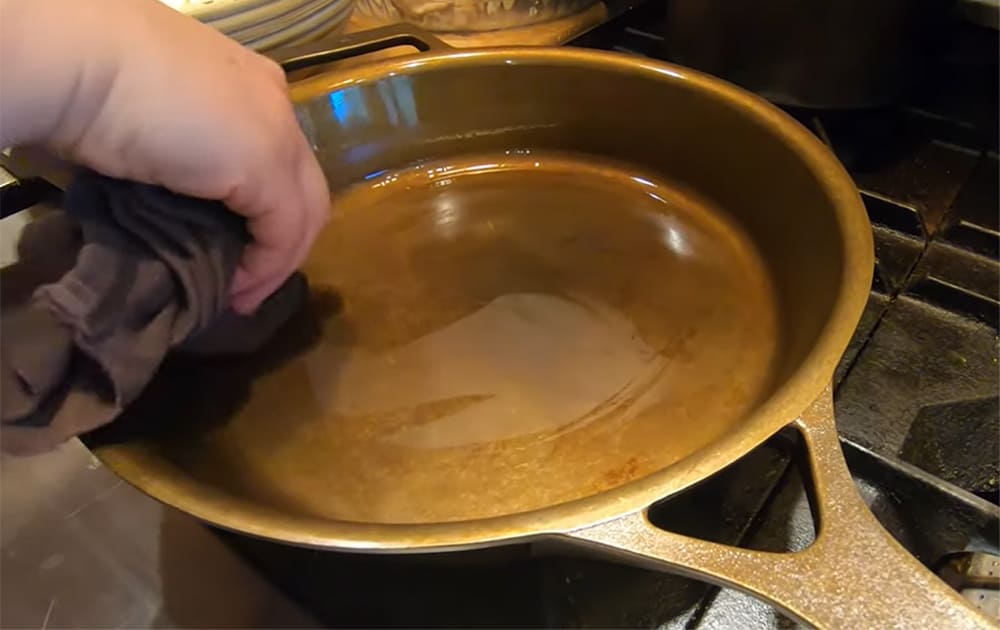
Modern Smooth
- Modern smooth cast iron cookware is truly trying to mimic their antique counterpart.
- They’re usually still just as heavy as the modern rough, but they’re much smoother because of a machine process for the finishing.
- These will typically have a rough exterior and a smooth interior surface with a nice non-stick finish.
- Modern smooth cast iron pieces tend to be very expensive. In fact, a large cast iron skillet can run between $200-$300.
- Look for artisanal brands like Butter Pat Industries and Finex.
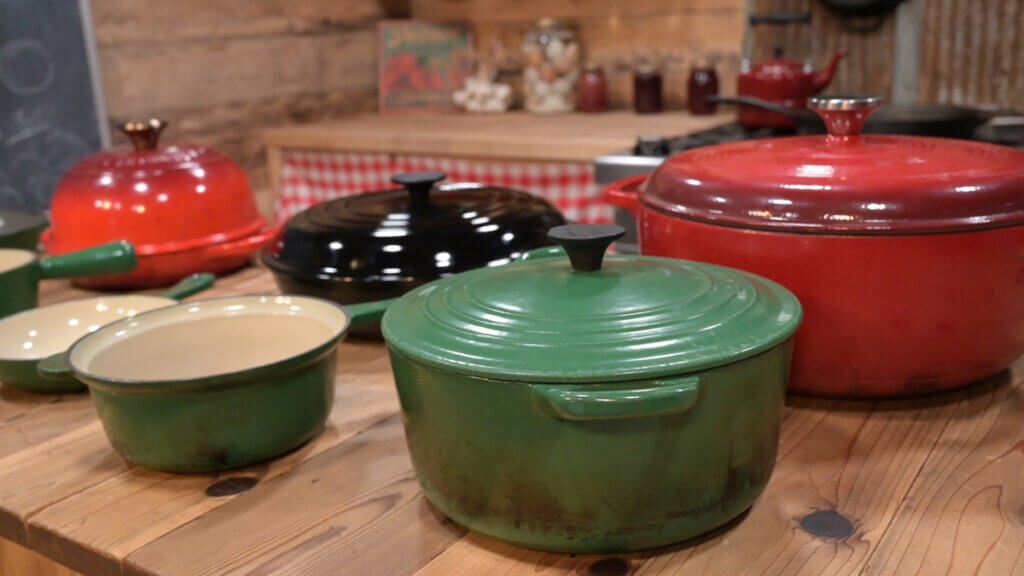
Enamel
- Enameled cast iron cookware is a great option if you’re going to be using your pan or pot with a lot of acidic foods (like tomato based products).
- If you’ll be simmering acidic foods for long periods of time, or using your pans for boiling water (say for cooking pasta), then using an enamel cast iron pot will help save your other cast iron pieces.
- Be sure you’re buying good quality enameled cast iron. The inexpensive pieces can tend to flake and chip after a while, leaving bits of enamel in your food.
Best Quality Cast Iron Cookware
Antique and modern smooth are the best in quality, however, antique wins out in my opinion because they will be much more affordable.
If you want to invest your money in something that will last for generations, then go ahead and spend the money on Modern Smooth.
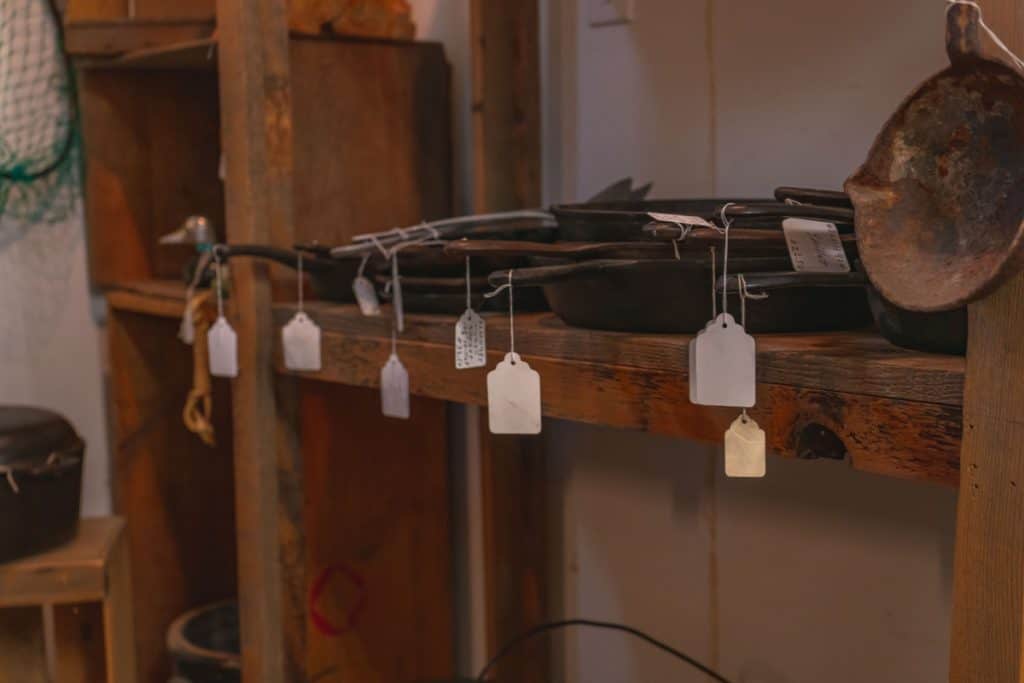
Where To Find Cast Iron Cookware?
Yard Sales
Yard sales are my top pick because, many times you can find true antique cast iron that’s in great condition (or that just needs a little TLC) for a great price.
Likewise, estate sales can be a great place to start looking for your collection.
Thrift Stores
Thrift stores are my second choice because the prices will likely still be very reasonable. You may need to give the pots and pans a little TLC, but it never hurts to take a look in the kitchen section each time you pass by.
Antique Stores
Antique stores are my third pick. Depending on the antique store, you may notice a variance in price. However, even the more pricey antique stores are still likely to sell their cast iron cookware at less than new prices (at least less than buying brand new modern smooth cast iron).
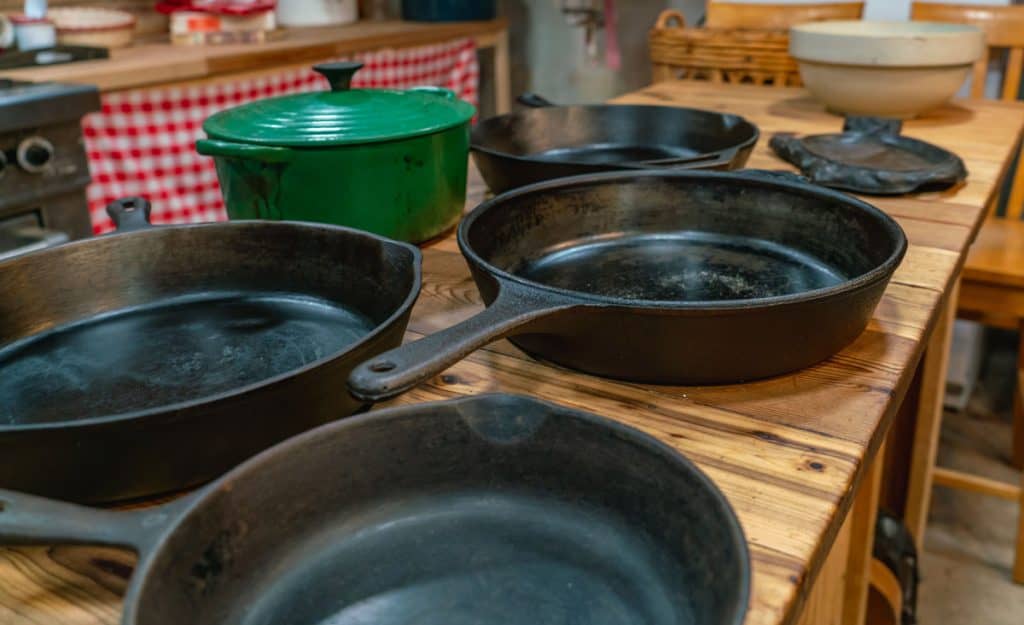
Which Cast Iron Cookware is the Best Investment?
If you want to buy a gift for someone that will last generations, then I’d recommend investing your money in a Modern Smooth set.
This is also a smart choice if you want to buy cast iron cookware for yourself that you can pass down to your grandkids one day.

How to Tell if Cast Iron Cookware is High Quality and in Good Condition
When shopping for cast iron cookware, there are a few basic tests you can do to know if the pot, pan or other cast iron cookware piece is one you’ll want to add to your lifelong collection.
- Weight – Pick up the cookware… is it heavy or light? Remember, the newer modern rough pieces will be much heavier than the antique or modern smooth. It’s a good idea to stay away from the super heavy pieces. Remember, if you’re having to lift them in or out of the oven, you’ll need to be able to lift them safely, especially once they’re filled with heavy food.
- Appearance – Look at the inside of the pan for the following, does it look smooth or rough and bumpy? Along with the weight of the cast iron piece, this test will help you determine if it’s a newer or older piece.
- Rust or Pitting – Check the piece all over to see if there is any rust or pitting. A little rust is OK and can generally be cleaned off during re-seasoning. However, if there’s pitting and the cast iron has been eroded away, this pan will be extremely difficult to salvage and likely won’t be worth your time.
- Warping – Is the piece warped? Set the pan down on a very flat surface. If there is any wobbling or movement in the pan, then it’s likely been misused or mishandled by over-heating or put into water when the pan was too hot. If it sits nice and flat without any movement, then it’s a great option.
- Ring or No Ring? – Flip the pan over and look at the bottom. Is there a skinny ring that runs around the perimeter of the pan? This isn’t a deal-breaker if you’re cooking on a gas/propane stove. However, if you’re cooking on a flattop, then you’ll need to make sure it’s a flat bottomed pan without that ring.
- Seasoning – Looking at the seasoning of the pan as a deal breaker is a personal choice. If you want to buy a pan that’s not going to require a lot of elbow grease on your end, then you might want to pass up on a pan that’s been poorly seasoned. However, thick, sticky or flaky seasoning just means the cast iron pan needs to be stripped and reseasoned properly. However, also inspect it very carefully because if there’s any chipping or pitting, this is something you’ll want to pass up.
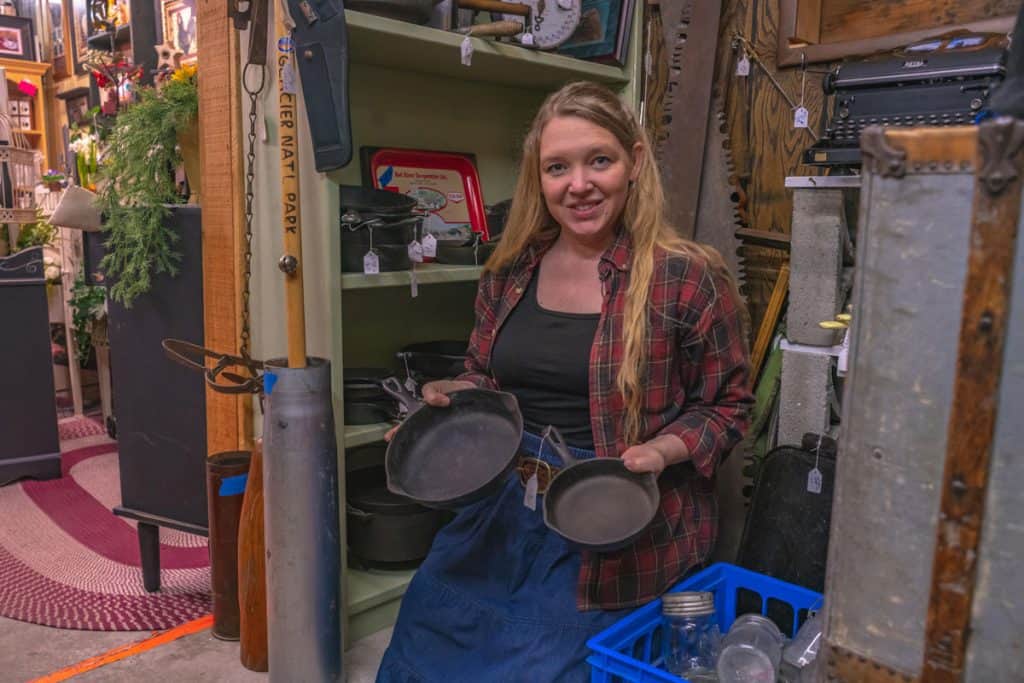
Conclusion
When looking for new, used or salvageable cast iron cookware, be sure you run it through each and every test. Know whether you’re buying antique, modern rough, modern smooth or enameled cast iron (this will help you determine a fair price), but most importantly, know whether the pan will be useable once you bring it home and give it a little TLC.
And just in case you need some great ideas for using your cast iron skillets, here are our favorite recipes to cook in them:
- Sourdough Parker House Rolls
- Homemade Pumpkin Pie
- Carolyn’s favorite breakfast casseroles
- Quick & Easy Pan Sauce Recipe
And don’t forget to learn how to render your own lard because it’s our favorite fat to use for seasoning our cast iron on a regular basis.
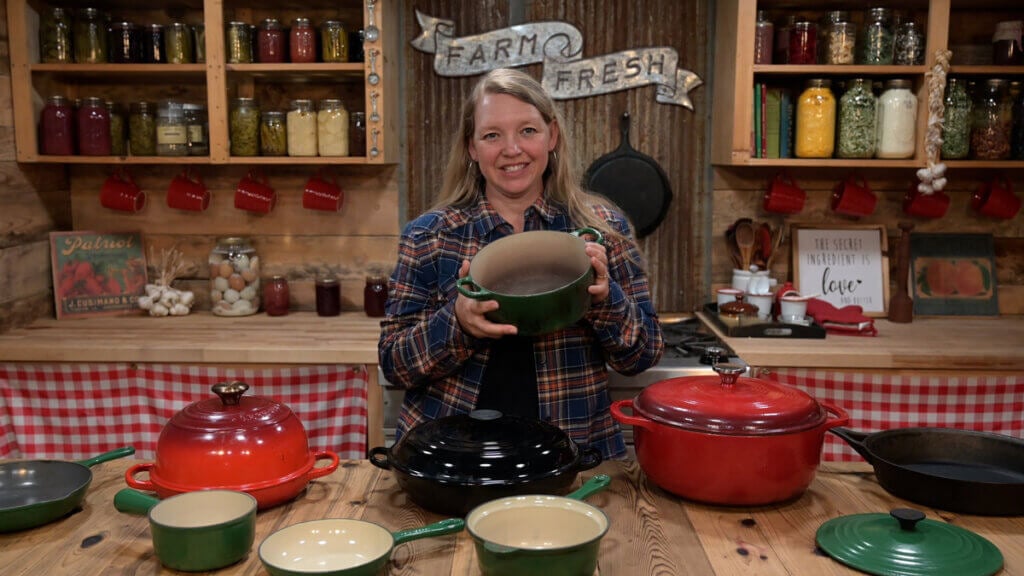
More Posts You May Enjoy
- How to Choose the Best Cast Iron Cookware (New or Used)
- How to Clean Cast Iron to Maintain the Seasoning
- Stripping and Seasoning a Cast Iron Pan
- How to Cook Scrambled Eggs in Cast Iron
- Growing and Pressing Your Own Seed Oils
- Knife Sharpening Basics
- Eating Well on a Budget
- Rendering Lard (or Tallow) for Homestead Cooking
- Meal Planning on the Homestead


